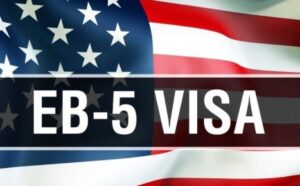



As DCI started to grow, as with any company, one of the first concerns was where to secure funds when needed. There are many banks and private investors that all seem like they are willing to help and they love your business idea, but in the end it all comes down to what “Asset Base” (Collateralization) your company is holding on the books. No one wants to take a chance on your company without this vital component, although they may like your idea.
DCI started to seek avenues for alternate sources of funding. That is when we utilized a government immigration program through investment in the form of EB5. What EB5 does is allow U.S. investors or foreign investors to place funds into structured business ventures to receive gains or losses from these business opportunities and to receive citizenship through direct investment into these business structures. Let us talk about these areas briefly.
Direct Investment:
Direct Investment is our standard way of investing in a business project. Invest your funds into the project and receive gains or losses from the project. Pretty straight forward.
EB5 Program:
Allows foreign investors to invest in projects (500k to 1.2 Million) so that they can receive residency for being involved within those projects. It should be noted that the U.S. permanent residency also includes residency to their spouse, and unmarried children under 21 years of age. Permanent Residency can be obtained through the government in 5 ways:
- *Family
- *Asylum
- *Lottery
- *Special Act of Congress
- *Employment Visa is divided into 5 categories
- *EB1
- *EB2
- *EB3
- *EB4
- *EB5 (Employment Base 5 category of Immigration). This is where we focus!
One area that was of even greater benefit to DCI was within the area of what is known as a Regional Center. In 1993 the U.S. Government created what is called a Regional Center as part of the EB5 program. Regional Centers are companies that create jobs in the United States (meaning the Regional Centers establish business). What this does for investors is that as of 1993 an investor could invest in a Regional Center and in 2 years would allow the investor to receive their green card simply by investing in a Regional Center Project. This allows the investor to be involved in the project Directly or Indirectly, which simply means, as long as the project that the investor is investing in creates 10 jobs through a Regional Center the investor will still receive their green card in 2 years without being employed through that particular project. This 10-job stipulation only relates to foreign investment.
Also, EB5 investors can invest their money into a company that is 100% owned by EB5 investors and that company can provide a loan (not investment funds) to fund a project with a stipulated interest rate. A few stipulations on EB5 funds are as follows:
- *The money is due back to EB5 within a 5-year period.
- *Funds are secured (Collateralized) by assets that are acquired by these funds.
- *If the project fails all assets are foreclosed on so that most funds can be returned to the interested parties involved.
- *The project should create enough jobs to qualify for EB5 funding.
- *The business plan should state how many jobs that project is going to create.
- *Business plans that are submitted with the EB5 Application(s) for projects should state how people will be used on the project.
- *It is especially important for Applicants to follow all laws of the United States and their home countries.
A major point to understand about a project is that there are formulas for funding success. Success can come in different ratios. What this means is that a project can be funded with various percentages. Those percentages are not limited to 100% EB5 funding.
- *A project can have 20% EB5 funding, 20% conventional banks, 60% private investment within the United States or 60%
- *A project can have 10% EB5 funding, 70% conventional banks, 20% bonds
- *A project can have 60% EB5 funding, 10% bonds, 30% conventional banks
- *Note: these ratios are structured totally by how funding in derived for that project.
Risk to Projects:
There is also a downside to this type of funding acquisitions. Investors are shareholders in these projects. Which means that all parties fail together; or all parties benefit together. If the project fails EB5 investment funds are lost. If the project is successful, EB5 investment funds go up with the project. This is the reason that DCI constructs the Risk Management and Compliance sectors as the most crucial aspect of project and funds management.
All in all, DCI understands that every great idea stays just that- an idea, unless that idea can have some amount of direct funds that are designed to get the project moving. Banks are great, Venture capital is great, Bonds are wonderful, but let’s just be honest, with all these entities sometimes they never want to be the first to invest and need some motivation to take a chance on someone, no matter how great the project sounds. Becoming a permanent resident within the United States is all the motivation that someone may need at that time to invest.
Working Project




Click a picture below to view drone videos of this project!